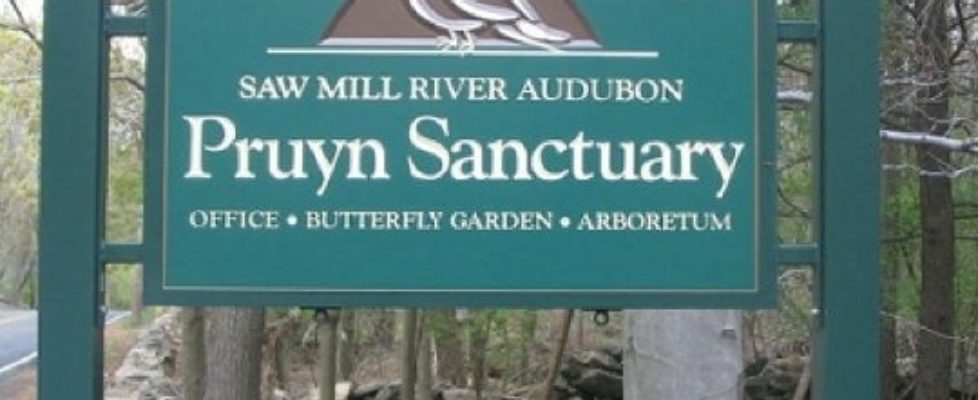Pruyn Awakening
Even in the depths of far colder, snowier winters than this one—so far, at least—SMRA’s Pruyn Sanctuary is always full of life. (A feature it shares with all woodlots, marshes, and gardens in the area.)
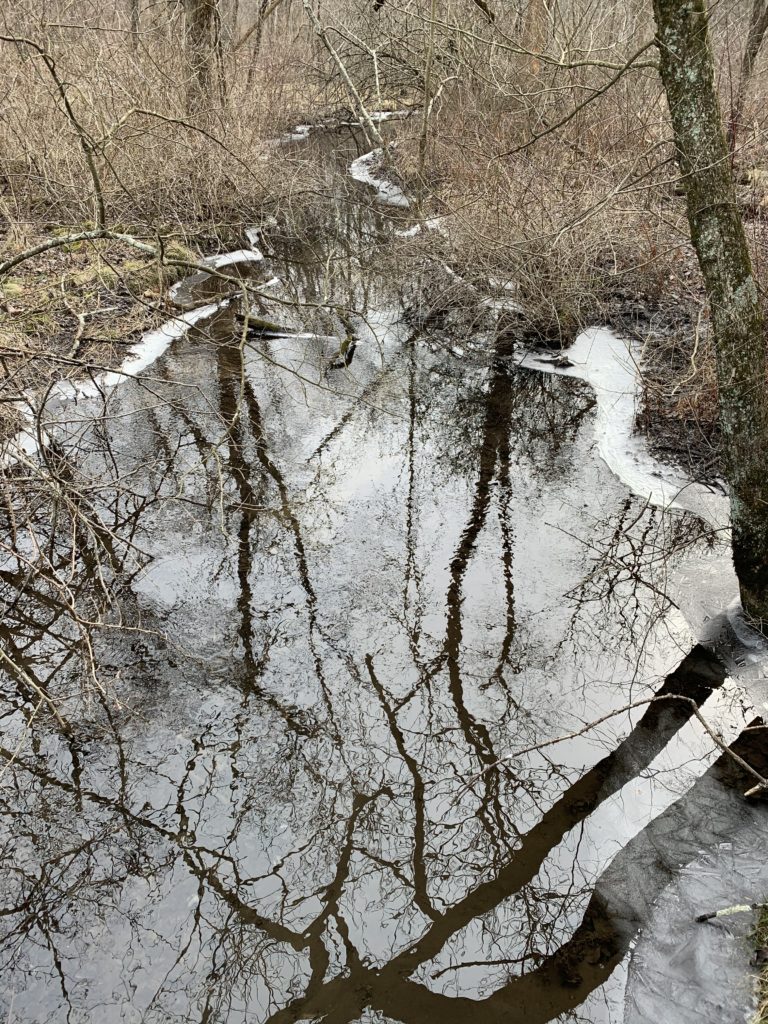
Photo: Joe Wallace
It just doesn’t look that way at a casual glance, because so much of the life is happening out of sight of even the most observant passerby. Beneath the pond and swamp, frogs and turtles are hibernating. Out in the woods, Red-Backed salamanders and Eastern chipmunks are doing the same. Under the ice covering the pond, dragonfly larvae are active, feeding and growing as they prepare for their springtime emergence.
And even though the Monarchs butterflies migrated months ago, other butterfly species are wintering over in the Butterfly and Hummingbird Garden, utilizing a variety of techniques to make it through the winter. (Black and Tiger swallowtails, for example, are currently ensconced in chrysalises, while adult Mourning cloaks are overwintering in knotholes and under loose bark.
But despite the hidden nature of so much of Pruyn’s current activity, a mid-February walk along the sanctuary’s trails and boardwalks reveals abundant signs that the sanctuary is preparing for spring. All it takes is open eyes and ears.
Perhaps the most noticeable evidence is the appearance of the first purple leaves of skunk cabbage coming up through the wet earth—and even through ice and snow—in the sanctuary’s wetter areas. (I’ll write more about this familiar, fascinating native wildflower in my next post.)
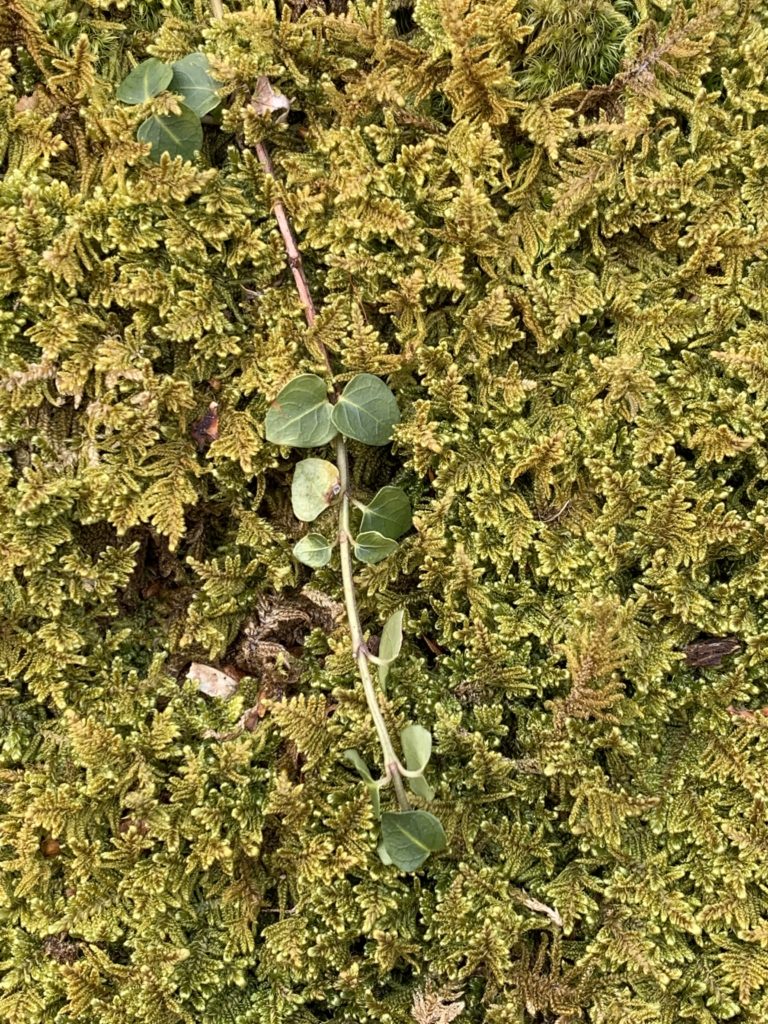
Photo: Joe Wallace
But it’s not the only plant that marks the change of seasons. Nestled in warm spots and on boulders, mosses are starting to turn freshly green, and vines are sending out new tendrils, and the buds on some larger bushes and trees are beginning to swell.
Insects follow the new growth, and already grubs and other borers are at work…especially in the sanctuary’s invaluable dead trees. (One of the biggest ecological threats to wildlife is the human habit of cutting down dead and dying trees. This “tidying-up” impulse denies insects, nesting birds, and other animals sources of food, nesting spaces, and dens, making refuges like Pruyn even more crucial.)
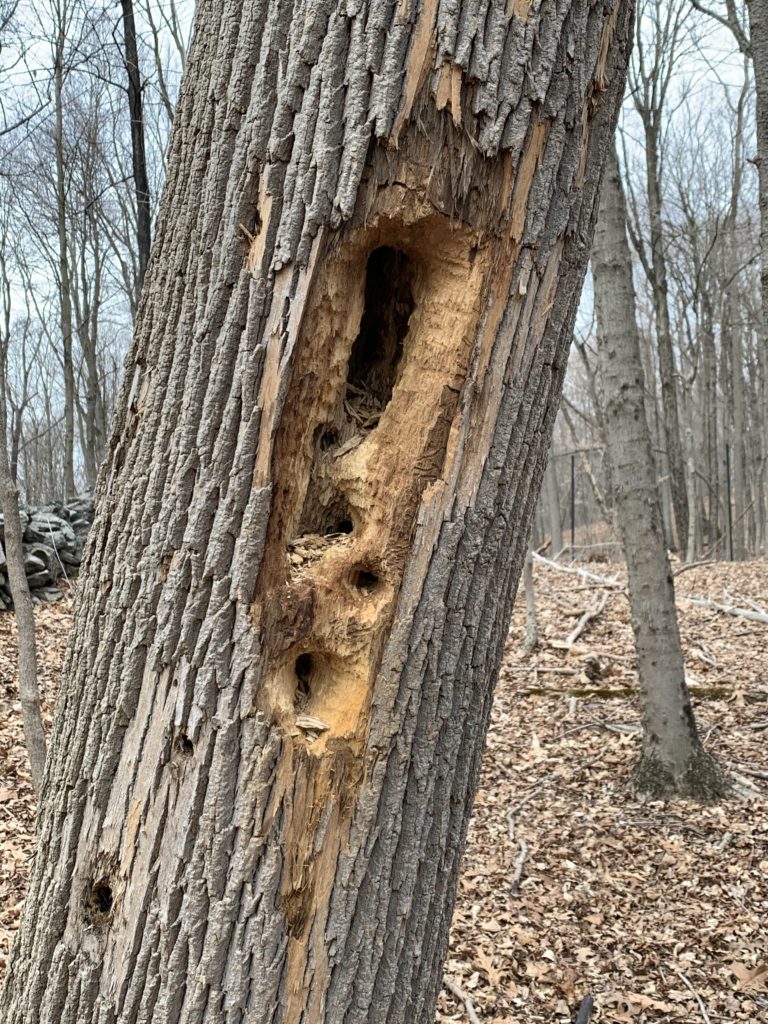
One way to tell that both bugs and birds have been active is to look for trees with large, rectangular excavations in their trunks, often quite near eye level. (And, if the holes are fresh enough, you might spot an impressive pile of wood chips on the ground below.) These gouges are made by the magnificent Pileated woodpecker, a crow-sized, black-and-white bird with a spectacular red crest.
Pileateds, which are year-round residents of Pruyn, excavate for wintering-over insects (especially carpenter ants), though in the coldest months they also include nuts and seeds in their diet. But as soon as the insects become more active with longer days and warming temperatures, so do the woodpeckers.
A couple of recent hours spent walking in Pruyn revealed not only fresh excavations, but a beautiful female Pileated drumming repeatedly (a loud, resonant sound that echoed through the woods) and another—perhaps her mate—letting loose with bugle-like calls.
Other birds, perhaps less spectacular, are also noticing that spring is on the horizon. House finches have paired up—they do this during the winter, giving themselves a jumpstart on nesting season—and the male finches have started singing their cheerful, warbling songs. The White-throated sparrows we’ve been seeing all winter will soon move north to nest—the ones that nest in our region will have migrated from wintering grounds further south— and the males are already getting their singing voices into shape as well.
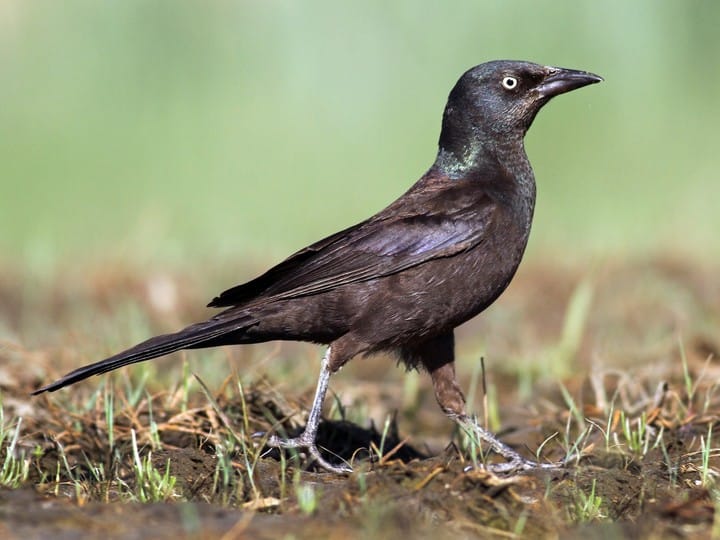
https://www.allaboutbirds.org/guide/Common_Grackle/id
And one of the characteristic sights and sounds of late winter is the appearance of large flocks of blackbirds: Pruyn’s woods are currently full of grackles.
It won’t be long before the sanctuary’s full spring panoply of growth and wildlife activity will be on display. But for now, even the subtle changes on display seem rich, vivid, and full of promise.
Copyright © 2020 by Joseph Wallace
